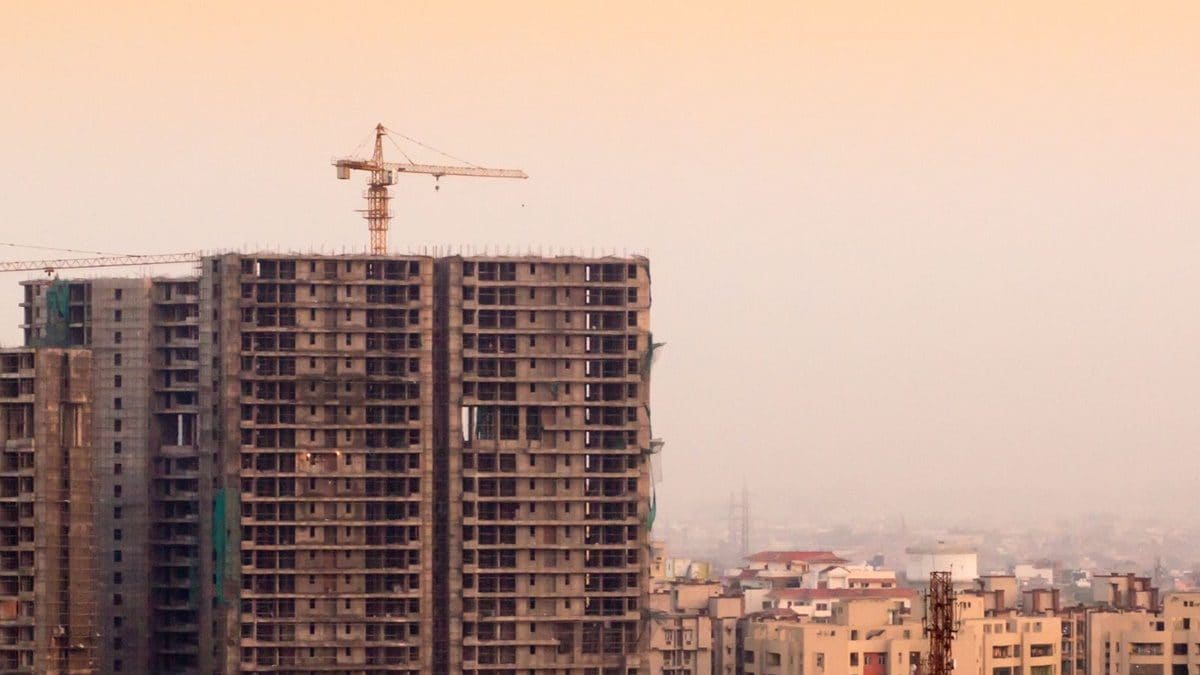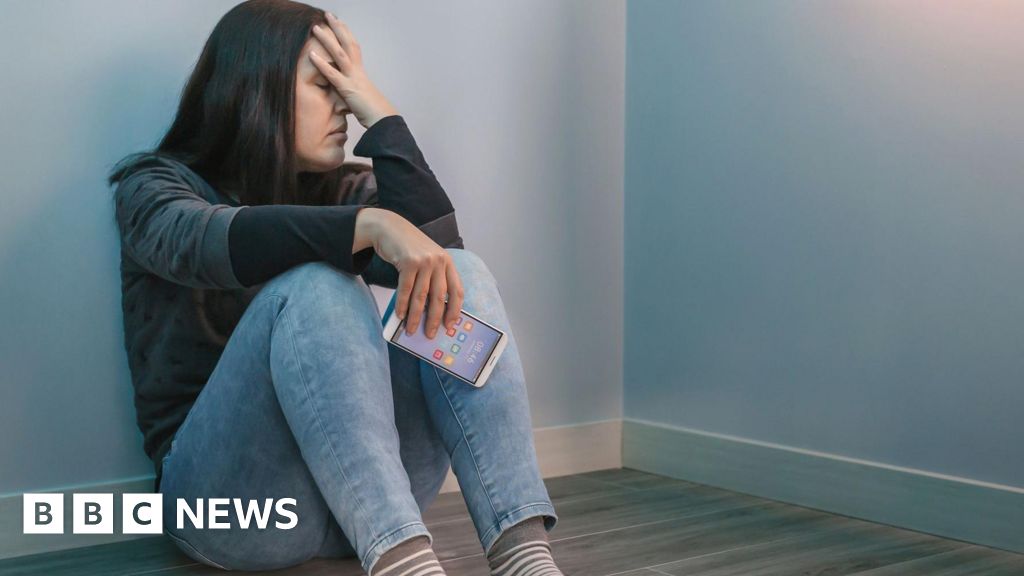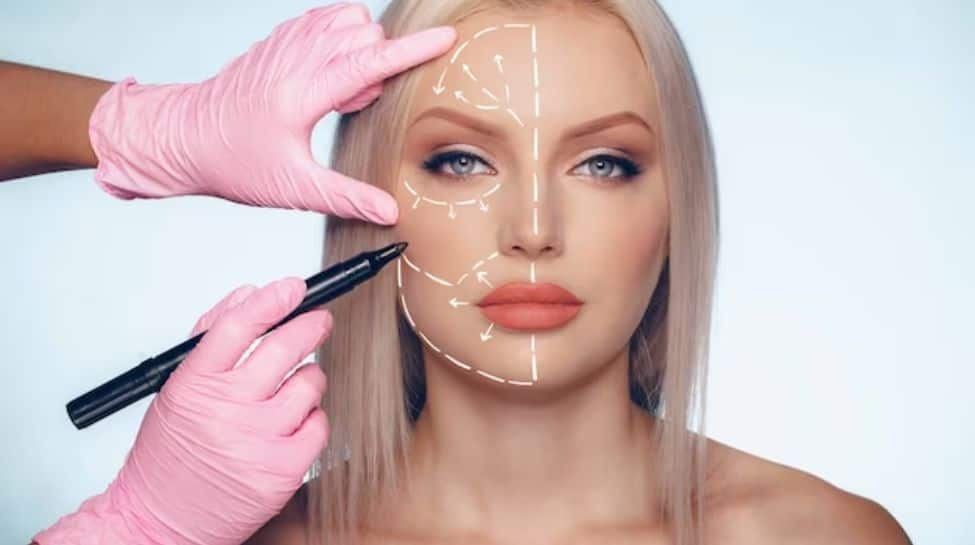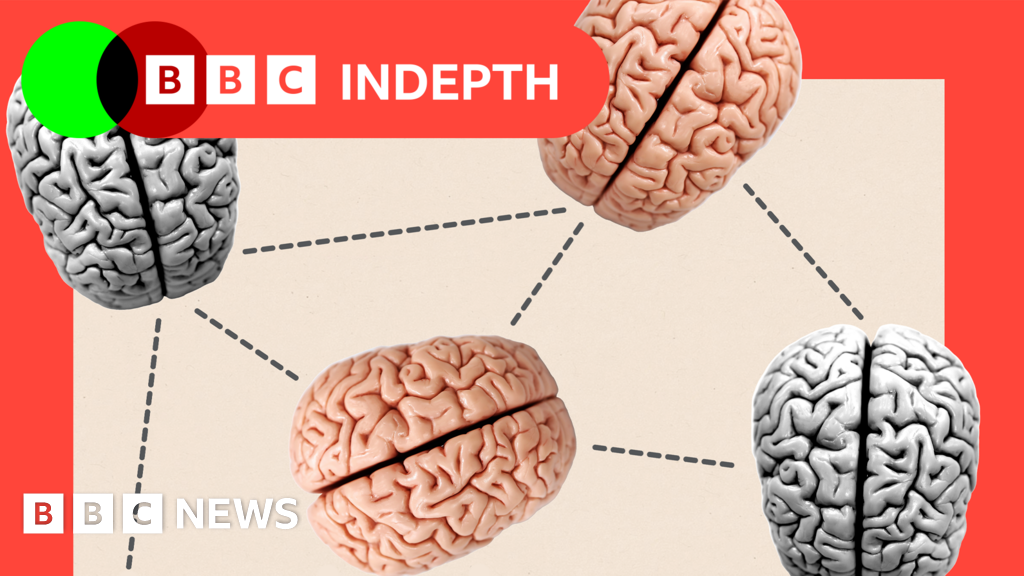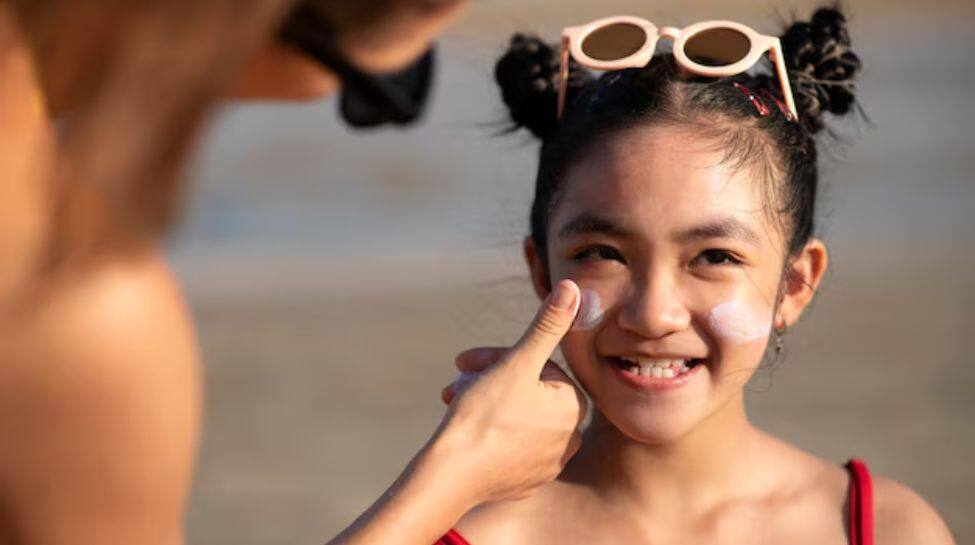Both Joanne Kent and Giulia Livi draw from color field painting, yet their work is also sculptural. Kent’s rectangular pieces are essentially blocks of a single hue. The artist complicates the format by applying oil paint in thick tangles that produce swells and shallows, and sometimes by including additional shades that are close but not identical to the dominant one. The paintings’ beguiling depths are simultaneously illusory and actual.
Most of Livi’s sculptures protrude about as far from the wall as Kent’s, undulating in regular curves. Made of painted tile, four of the pieces curl neatly, one into a partial tube and another whose ripples shift from pink to lilac. The other Livi creation is made of painted foam that bulges softly within its hard-edge contour. As with the Baltimore artist’s other sculptures, the effect is to freeze motion serenely in space.
Both Ara Koh and Kristina Penhoet draw lines with tangled strands that appear to dangle and pool. Koh’s sculptures look like piles of ribbons whose hues become subtly darker toward the bottom of the heap. But the threads are in fact ceramic, so their seeming softness is a canny deception.
Penhoet’s works, which really are pliable, are made primarily of off-white wool that’s woven and knotted to yield various thicknesses. Two of the pieces hang from ceiling to floor, evoking trees, vines or Rapunzel-length tresses while casting shadows whose movements emphasize how the fibers sway. Of these artists, Penhoet is the only one to forgo color, but she makes the most energetic use of motion.
Beyond Surface Through Aug. 3 at Pazo Fine Art, 1932 Ninth St. NW (entrance at 1917 9½ St. NW). pazofineart.com. 571-315-5279.
The Bright Side
The three artists featured in African Art Beats’ “The Bright Side” hail from different regions of Africa, and employ diverse styles. But all the men, each known by a mononym, share an enthusiasm for assembling and transforming. Their work is made from everyday stuff, which is both celebrated and transfigured.
Cheerful collage-paintings are the specialty of Soul (Souleymane Konaté), who depicts big-eyed people, animals and hybrid creatures. The self-taught Ivory Coast artist places his subjects amid patterns, often floral, so that the cartoonish beings appear to emerge from, or merge into, their colorful surroundings.
Diamas (Serge Diakota Mabilama) takes a similar approach, but with sculptural paintings that include such recognizable objects as a pan and Sprite bottle caps. The former serves as a metallic canvas for a painting of a faceless figure, while the latter are strung into garlands that festoon another circular picture. The artist, who lives in the Democratic Republic of the Congo, uses automotive varnish and found objects to craft such ironically titled pieces as “Unbreakable,” a portrait rendered on a partly broken black plate to which Diamas has playfully attached a battered spoon.
More traditional subject matter is rendered with industrial substances by Doff (Apollinaire Guidimbaye), an artist from Chad who also has no formal artistic training. His search for seemingly worthless scrap materials earned him his nickname, Wolof for “fool.” But there’s nothing laughable about his relief sculptures of flowers and market scenes, interpreted with such unexpected materials as bullet casings and melted plastic. Doff’s simple imagery is deepened by its complex textures, urgent ecological implications and sheer inventiveness.
The Bright Side Through Aug. 15 at African Art Beats, 3501 Lowell St. NW. africanartbeats.com. 202-766-2608.
From Wood to Paper and Back Again
The title of Adah Rose Gallery’s “From Wood to Paper and Back Again” reflects such pieces as Jessica Drenk’s sculpture in which dozens of concentric paper layers, pressed closely together, simulate a tree trunk’s rings. The wide-ranging group show, curated by Mary Freedman and Lisa Rosenstein, includes several other works that emphasize the qualities of their materials. Among these are Rosenstein’s own oval collages made of torn paper and Christian Tribastone’s “High/Low,” which playfully elevates everyday brown cardboard by partly coating it with gold leaf.
The majority of the entries, however, are simply drawings, paintings or prints, most often on paper. The representational works include Freedman’s expressionist charcoals of tulips and Nathan Loda’s realistic but slightly haunted oils of sylvan scenes; substantially more impish are Gregory Ferrand’s pencil renderings of people in Batman costumes. Floral rather than arboreal motifs are dissected and layered in prints by Susan Goldman, a silk-screen virtuoso. As naturalistic as they are abstract, Goldman’s prints shift from blossoms to geometry and back again.
From Wood to Paper and Back Again Through Aug. 10 at Adah Rose Gallery, 3766 Howard Ave., Kensington. adahrosegallery.com. 301-922-0162.
Redeat Wondemu
Local photographer Redeat Wondemu often travels home to Ethiopia, where she makes portraits of women that begin with interviews to establish a rapport between artist and subject. Wondemu takes a much less documentary approach to the self-portraits in “Phoenix Series,” six of which are on display at IA&A at Hillyer. These five-foot-high pictures feature softly defined images and stress motion over character; the artist’s face is visible in only two of the pictures, and even in those the visage is muddied and shadowy.
The “Phoenix” Series photos are contact-printed from digital negatives onto watercolor paper using the blueprint-like cyanotype process. Slow shutter speeds smear Wondemu’s flowing clothing into swoops of white, suggesting a bird’s plumage. The blurred figures are framed by deep blue expanses that turn mushy around the edges, as if the backdrop is melting. The poses suggest a dance to various freedoms, including an unshackling from photographic verisimilitude. As Wondemu emulates a bird, the photos very nearly turn into paintings.
Redeat Wondemu: Phoenix Series Through July 28 at IA&A at Hillyer, 9 Hillyer Ct. NW. athillyer.org. 202-338-0680.






